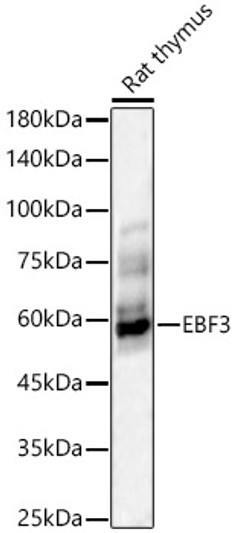| Host: | Rabbit |
| Applications: | WB/IHC-P/ELISA |
| Reactivity: | Human/Mouse |
| Note: | STRICTLY FOR FURTHER SCIENTIFIC RESEARCH USE ONLY (RUO). MUST NOT TO BE USED IN DIAGNOSTIC OR THERAPEUTIC APPLICATIONS. |
| Clonality : | Monoclonal |
| Clone ID : | S8MR |
| Conjugation: | Unconjugated |
| Isotype: | IgG |
| Formulation: | PBS with 0.05% Proclin300, 0.05% BSA, 50% Glycerol, pH 7.3. |
| Purification: | Affinity purification |
| Concentration: | Lot specific |
| Dilution Range: | WB:1:100-1:500IHC-P:1:50-1:200ELISA:Recommended starting concentration is 1 Mu g/mL. Please optimize the concentration based on your specific assay requirements. |
| Storage Instruction: | Store at-20°C for up to 1 year from the date of receipt, and avoid repeat freeze-thaw cycles. |
| Gene Symbol: | PFKFB3 |
| Gene ID: | 5209 |
| Uniprot ID: | F263_HUMAN |
| Immunogen Region: | 400-500 |
| Specificity: | A synthetic peptide corresponding to a sequence within amino acids 400-500 of human PFKFB3 (NP_004557.1). |
| Immunogen Sequence: | LDKSAEEMPYLKCPLHTVLK LTPVAYGCRVESIYLNVESV CTHRERSEDAKKGPNPLMRR NSVTPLASPEPTKKPRINSF EEHVASTSAALPSCLPPEVP T |
| Tissue Specificity | Ubiquitous. |
| Post Translational Modifications | Phosphorylation by AMPK stimulates activity. |
| Function | Catalyzes both the synthesis and degradation of fructose 2,6-bisphosphate. |
| Protein Name | 6-Phosphofructo-2-Kinase/Fructose-2 -6-Bisphosphatase 36pf-2-K/Fru-2 -6-P2ase 3Pfk/Fbpase 36pf-2-K/Fru-2 -6-P2ase Brain/Placenta-Type IsozymeRenal Carcinoma Antigen Ny-Ren-56Ipfk-2 Includes - 6-Phosphofructo-2-Kinase - Fructose-2 -6-Bisphosphatase |
| Database Links | Reactome: R-HSA-9634600 |
| Alternative Antibody Names | Anti-6-Phosphofructo-2-Kinase/Fructose-2 -6-Bisphosphatase 3 antibodyAnti-6pf-2-K/Fru-2 -6-P2ase 3 antibodyAnti-Pfk/Fbpase 3 antibodyAnti-6pf-2-K/Fru-2 -6-P2ase Brain/Placenta-Type Isozyme antibodyAnti-Renal Carcinoma Antigen Ny-Ren-56 antibodyAnti-Ipfk-2 Includes - 6-Phosphofructo-2-Kinase - Fructose-2 -6-Bisphosphatase antibodyAnti-PFKFB3 antibody |
Information sourced from Uniprot.org













